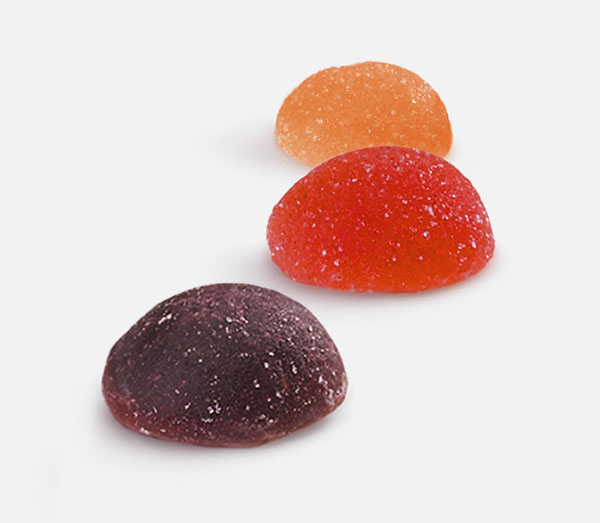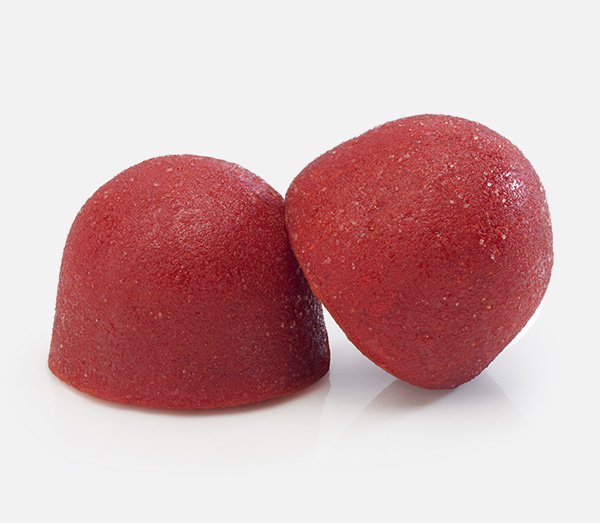The benefits of vegan snacks
Of course, not all of us want to go vegan. But grabbing a vegan snack from time to time can be a good idea. Whether consumers have been vegan, are trying to become vegan or are looking to enjoy a good steak, tasty eggs, or delicious cheese on a regular basis – vegan snacking has a ton of benefits that they may not know about.
We are long past tasteless vegan chocolate bars and boring plant-based alternatives for regular snacks. Although vegan products still appear on supermarket shelves only sporadically, the vegan market is booming, and vegan snacks are becoming tastier and healthier every year. And what’s more: they are incredibly beneficial! While vegan snacks are not necessarily always healthier than regular snacks (healthy snack options with dairy and eggs exist), they do provide a natural alternative and have more environmental benefits than animal products often do.

Research has long shown that plant-based alternatives are more sustainable than animal products in the long run. Studies from the US¹ have found that swapping even half of all animal-based foods for plant-based alternatives would significantly reduce emission of harmful gases. An Oxford study² has also found that the consumption of more vegan alternatives by large parts of the population can reduce negative environmental impacts. Vegan snacks are good for our body too! Large-scale studies³ have linked switching from animal-derived to plant-based protein to lower health risks and a better well-being. It is also no secret that fruit and vegetables, which are often the main ingredients in vegan snacks, contain countless vitamins that should bean important part of people’s diets anyway. Vitamin A, C, E, and magnesium are just some of the nutrients found in vegan snacks. Now looking at all these benefits of vegan food and vegan snacking, the question is: why don’t more people do it? Why are vegan snacks still quite rarely found in the snack drawer?
A lack of options

A vegan diet – or even the consumption of vegan snacks – requires time and thought. Vegan options are often more expensive than non-vegan ones and sometimes – admittedly – less tasty.
Moreover, it is still an effort to consciously go and find vegan options for meals, recipes and snacks. Consumers have to carefully check labels and certificates and spend time looking for vegan alternatives on the supermarket shelves. In addition to that vegan options are often more expensive.
An important part of snacking is, however, is that it’s supposed to be fun. So it’s easy to see, why people are hesitant to invest an overly large amount of time, money and conscious effort into their snacks.
Snacking fruit
One solution? You guessed it: fruit! Pure fruits are a tasty, vegan, natural snacks with absolutely no animal products and a comparatively low environmental pressure. Since there are so many different types of fruit, they contain most of the vitamins and nutrients needed in a balanced diet. A regular consumption of fruit has long been linked to countless health benefits such as a reduced risk for strokes, obesity, depression, and diabetes. Fruit can be used in different types of snack products such as chocolate, cereal, cereal bars or in the form of tasty gummies. Either way, it elevates the taste, look and freshness of any product and are incredibly popular among customers.
But – like everything else – it has adrawback<. Fruits are often only available during a particular season and even then: they spoil very fast. Providing customers with out-of-season fruit is associated with increased costs and emissions and requires more natural resources. At the same time, the shelflife of fruit is very short, which is an inconvenience when looking for a quick, spontaneous snack. What’s more, it creates a lot of food waste. Data shows⁴ that there is relatively more food waste in fruit than in animal products.
Conclusion
As we have seen vegan snacks are healthy and environmentally friendly. Moreover, the market for vegan snacks shows incredible potential. And while different fruits are an especially fun plant-based snack, they pose several difficulties such as seasonality and short shelf-life.
This is where alternative fruit products come in. Of course, fresh fruits are a wonderful snack, but when using fruit in other snack products, it is often a good idea to try freeze-dried or frozen fruit as well as fruit granulates, pastes or gummies. Freeze-dried fruits for instance are small, lightweight and have a long shelf-life, while retaining almost the same nutritional levels as fresh fruit. They also keep their color and taste, which makes them a beautiful and tasty addition to vegan snacks.
Furthermore, fruit granulates, pastes or gummies create a greater variety in textures and possible uses. Fruity vitamin gummies combine the benefits of fruit with added vitamins and minerals and can be a healthy vegan snack as well! The best thing about freeze-dried and frozen fruit as well as different fruit granulates, pastes and gummies is that it offers consumers a simple and easy vegan snack option that is tasty and healthy. This way they can enjoy your products not just in January but throughout the year.

¹ Koeleian & Heller. (2020). ”Implications of Future US Diet Scenarios on Greenhouse Gas Emissions”.
² Poore & Nemecek. (2018). “Reducing food’s environmental impacts through producers and consumers”.
³ Budhathoki et al. (2019). “Association of Animal and Plant Protein Intake with All-Cause and Cause-Specific Mortality in a Japanese Cohort”.
⁴ Springmann et al. (2018). “Options for keeping the food system within environmental limits”.


